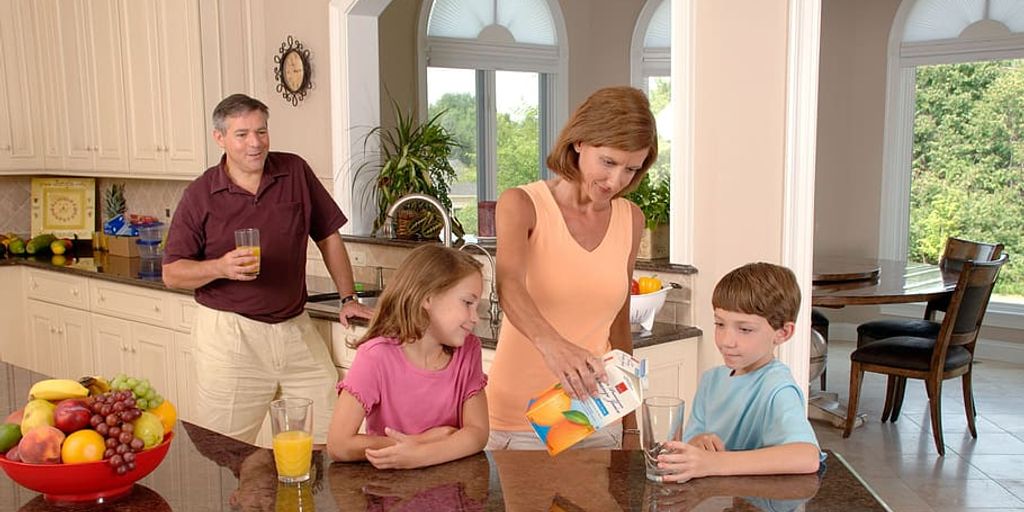
Optimizing your home for wellness is essential for promoting health and happiness. By focusing on mindful eating environments, clutter-free spaces, and vibrant social interactions, we can significantly enhance our quality of life. Each element, from the kitchen to the living room, plays a pivotal role in fostering physical health, mental clarity, and emotional well-being.
Key Takeaways
- Create mindful eating environments by designing a nourishing kitchen space, promoting healthy eating habits, and involving the family in meal preparation.
- Foster mental clarity by embracing minimalist living, providing organizational tips for every room, and maintaining a tidy home to support mental wellness.
- Enhance social interactions in communal areas by designing spaces for family activities, encouraging open communication, and creating a welcoming atmosphere.
- Prioritize physical health through home layout by optimizing space for physical activities, incorporating nature, and choosing ergonomic furniture.
- Build emotional well-being by creating calm environments, engaging in activities for emotional bonding, and supporting resilience.
Creating Mindful Eating Environments

Designing a Nourishing Kitchen Space
Creating a kitchen that promotes mindful eating begins with its design. Opt for open, airy spaces with natural lighting to enhance the overall mood and encourage healthier eating choices. Incorporate elements like a central island to facilitate family interactions during meal prep.
Promoting Healthy Eating Habits
Education and awareness are crucial in fostering healthy eating habits. Display nutritional information and healthy recipes in visible areas to inspire better food choices. Regular discussions about the benefits of various foods can empower family members to make informed decisions.
Involving Family in Meal Preparation
Involving everyone in meal preparation not only makes the process enjoyable but also educates them about the importance of nutrition. This hands-on approach is a practical method to instill lifelong healthy eating habits in children and adults alike.
By integrating these strategies into your home, you can create a nurturing space that promotes wellness and healthy living.
Fostering Mental Clarity with Clutter-Free Spaces

Benefits of Minimalist Living
Embracing a minimalist lifestyle can significantly enhance your mental clarity and overall well-being. Keeping your living space clean is shown to promote calmness and a sense of control over your day-to-day life. Not only does minimalism reduce the distractions of excess belongings, but it also fosters a sense of freedom and peace.
Organizational Tips for Every Room
To achieve a clutter-free home, start by decluttering one room at a time. Organize your space thoughtfully to prevent future clutter. Consider multi-functional furniture and storage solutions that can help maintain a tidy environment. Regularly sorting through belongings to discard or donate items that are no longer needed can keep your home minimal and manageable.
Maintaining a Tidy Home for Mental Wellness
A consistent routine is key to maintaining a clutter-free home. Set a daily or weekly schedule for tidying up and stick to it. This habit not only keeps your space clean but also improves your focus and productivity. Remember, a tidy home is a cornerstone of mental wellness, providing a serene environment where you can relax and rejuvenate.
A tidy space can make for a more relaxed mind, enhancing your ability to focus and feel in control.
Enhancing Social Interaction in Communal Areas

Designing Spaces for Family Activities
Creating communal areas that promote family activities is essential for enhancing social interaction at home. Consider an open floor plan that encourages everyone to gather and participate in activities together. Arrange furniture to facilitate conversation and group activities, ensuring that these spaces are versatile and adaptable to various family needs.
Encouraging Open Communication
Open communication is the cornerstone of strong family relationships. Design spaces that feel inviting and comfortable, promoting regular family meetings and casual conversations. Use soft, warm lighting and comfortable seating to make these areas the heart of your home where everyone feels welcome to share and engage.
Creating a Welcoming Atmosphere
A welcoming atmosphere in your home can significantly influence the quality of social interactions. Incorporate elements that reflect the family’s personality and tastes, making everyone feel at home. Adding personal touches like family photos or favorite artworks can make communal areas more inviting, fostering a sense of belonging and support.
By focusing on these key areas, you can create a home environment that not only supports but enhances family wellness through improved social interactions.
Prioritizing Physical Health Through Home Layout

Optimizing Space for Physical Activities
To truly prioritize physical health, consider how your home layout can encourage movement. Designate specific areas for exercise, whether it’s a corner of a room for yoga mats or a designated workout room. This not only makes physical activity more accessible but also integrates it into your daily life.
Incorporating Nature and Greenery
Bringing elements of nature into your home can significantly boost your physical and mental health. Strategically place plants and flowers to purify the air and create a more inviting space. Consider a small indoor garden or a few well-placed greenery to enhance your living environment.
Ergonomic Furniture for Better Posture
Investing in ergonomic furniture is crucial for maintaining good posture and preventing physical strain. Choose chairs and desks that support your spine and encourage proper posture. This simple change can make a substantial difference in your overall health and comfort.
By rethinking your home layout to include areas for physical activities, nature, and ergonomic furniture, you can create a healthier living environment that supports both physical and mental wellness.
Building Emotional Well-being at Home

Creating Calm and Restful Environments
To foster emotional well-being, it’s essential to create spaces that evoke calmness and relaxation. Utilize soft lighting, comfortable seating, and elements of nature to transform areas into peaceful retreats. Incorporating soothing colors and clutter-free designs can significantly enhance the tranquility of your home.
Activities for Emotional Bonding
Family activities that promote emotional bonding are crucial for a healthy home environment. Consider regular family game nights, storytelling sessions, or creative arts projects. These activities not only strengthen relationships but also support emotional development and resilience.
Supporting Individual and Collective Resilience
Building resilience within the family involves both individual and collective efforts. Encourage personal hobbies and interests while also fostering a supportive family network. This dual approach helps each family member to thrive emotionally and supports the overall resilience of the family unit.
Promoting Family Wellness Through Routine

Establishing Consistent Healthy Routines
Creating consistent routines is essential for family wellness. Familiar activities can provide comfort during challenging times, making children and adults feel more secure and confident. Simplifying your family’s schedule can help prioritize health and reduce stress, allowing more time for activities that matter.
The Role of Sleep in Family Health
Sleep plays a critical role in maintaining the health of all family members. Ensuring everyone gets adequate rest is key to physical and mental health. It’s important to establish a calming bedtime routine that can help everyone wind down and get the rest they need.
Balancing Work and Leisure at Home
Finding the right balance between work and leisure at home is crucial for maintaining family wellness. Identify free times when the family can engage in physical activities together. This not only strengthens the family bond but also promotes individual health. Taking baby steps towards integrating wellness into every corner of your home can lead to a healthier, more connected family life.
Leveraging Technology for Enhanced Home Wellness

Smart Devices for Health Monitoring
In today’s digital age, smart devices play a crucial role in health monitoring. From fitness trackers to smart scales, these devices provide real-time data that help families stay informed about their health metrics. Utilizing these tools can lead to more proactive health management and better lifestyle choices.
Apps and Tools for Mental Health
The integration of apps and tools designed for mental health into daily routines can significantly enhance emotional well-being. These applications offer resources such as meditation guides, mood tracking, and stress management techniques, making mental health support accessible at home.
Tech for Improving Air and Water Quality
Ensuring the quality of air and water in your home is essential for maintaining good health. Advanced purifiers and smart water filters can dramatically improve the environment, making it safer and more comfortable for everyone. This technology not only supports physical health but also contributes to overall wellness.
Conclusion
In conclusion, transforming your home into a wellness sanctuary is a vital step towards fostering a healthier, happier family life. By focusing on creating mindful eating environments, maintaining clutter-free spaces, and encouraging vibrant social interactions, you can significantly enhance the well-being of every family member. Remember, the journey to a healthier home doesn’t have to be overwhelming; start with small, manageable changes and gradually build a living space that supports both physical and mental health. Embrace these strategies today and witness the transformative impact on your family’s overall wellness.
Frequently Asked Questions
How can I design my kitchen to promote healthier eating habits?
Start by organizing your kitchen space to make healthy food options easily accessible. Use clear containers for fruits and vegetables and place them at eye level. Consider having a designated prep area to make meal preparation more inviting and efficient.
What are some effective ways to reduce clutter for better mental health?
Begin by decluttering high-traffic areas and adopting minimalist principles. Use storage solutions that keep items out of sight but organized. Regularly schedule declutter sessions and encourage all family members to participate in maintaining tidy spaces.
How can I enhance social interactions in my home’s communal areas?
Create spaces that encourage gathering, such as comfortable seating arrangements and interactive games or activities. Promote open communication by having a ‘no tech’ rule during family time to enhance engagement and presence among members.
What home layout adjustments can improve physical health?
Incorporate areas dedicated to physical activity, such as a small home gym or designated yoga space. Use ergonomic furniture to support good posture and reduce strain. Ensure there is plenty of natural light and consider adding indoor plants to improve air quality.
How can I foster emotional well-being in my home?
Design calm and restful environments using soothing colors and comfortable furnishings. Engage in activities that promote emotional bonding, like family game nights or storytelling sessions. Support resilience by creating a supportive and understanding family atmosphere.
What role does routine play in family wellness?
Establishing consistent routines, especially around meal times and sleep, helps create a sense of security and predictability. Balance work and leisure to ensure that all family members have time to relax and rejuvenate, fostering overall well-being.






